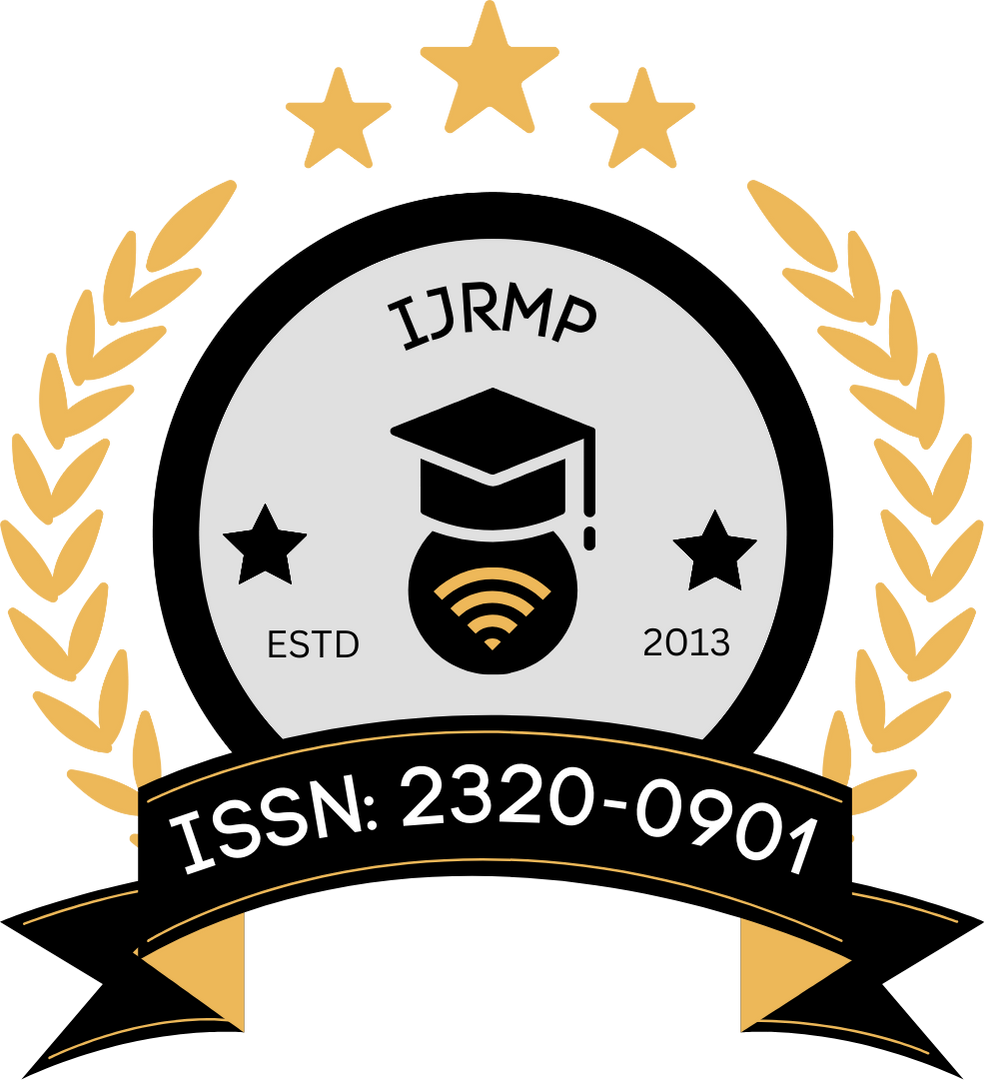![]()
DOI: https://doi.org/10.63345/ijrmp.v13.i5.1
Lavanya Prasad
Independent Researcher
Andhra Pradesh, India
Abstract
Nanocarrier-based drug delivery systems have emerged as a promising approach in targeted cancer therapy, offering potential improvements in therapeutic efficacy and reduced systemic toxicity. These nanoscale vehicles can encapsulate chemotherapeutic agents, target tumor cells specifically, and overcome the limitations of conventional therapies. This manuscript reviews the evolution of nanocarriers, focusing on literature available up to 2021. We detail various nanocarrier types, including liposomes, polymeric nanoparticles, dendrimers, and inorganic nanomaterials, and discuss their roles in enhancing drug bioavailability and achieving site-specific drug delivery. A statistical analysis summarizing selected studies is presented, along with the methodology used to synthesize and evaluate nanocarrier formulations. The results indicate significant improvements in drug uptake by tumor tissues and enhanced survival in preclinical models. Concluding remarks highlight current challenges and future perspectives in translating these nanotechnologies from bench to bedside.
Keywords
Nanocarriers; Targeted Therapy; Cancer; Drug Delivery; Nanomedicine
References
- https://www.google.com/url?sa=i&url=https%3A%2F%2Fwww.frontiersin.org%2Fjournals%2Fpharmacology%2Farticles%2F10.3389%2Ffphar.2024.1435133%2Ffull&psig=AOvVaw1ozCiqH-soc3lXMFJiS6vQ&ust=1741680374358000&source=images&cd=vfe&opi=89978449&ved=0CBQQjRxqFwoTCIjshKWH_4sDFQAAAAAdAAAAABAR
- https://www.google.com/url?sa=i&url=https%3A%2F%2Fwww.sciencedirect.com%2Fscience%2Farticle%2Fpii%2FS1572100022002010&psig=AOvVaw0hJPvWyMjJBhrfQ7gKKFJz&ust=1741680612947000&source=images&cd=vfe&opi=89978449&ved=0CBQQjRxqFwoTCMCn2KyI_4sDFQAAAAAdAAAAABAW
- Torchilin, V. P. (2005). Recent advances with liposomes as pharmaceutical carriers. Nature Reviews Drug Discovery, 4(2), 145–160.
- Duncan, R. (2006). Polymer conjugates as anticancer nanomedicines. Nature Reviews Cancer, 6(9), 688–701.
- Maeda, H., Wu, J., Sawa, T., Matsumura, Y., & Hori, K. (2000). Tumor vascular permeability and the EPR effect in macromolecular therapeutics: a review. Journal of Controlled Release, 65(1–2), 271–284.
- Alexis, F., Pridgen, E., Molnar, L. K., & Farokhzad, O. C. (2008). Factors affecting the clearance and biodistribution of polymeric nanoparticles. Molecular Pharmaceutics, 5(4), 505–515.
- Bertrand, N., Wu, J., Xu, X., Kamaly, N., & Farokhzad, O. C. (2014). Cancer nanotechnology: the impact of passive and active targeting in the era of modern cancer biology. Advanced Drug Delivery Reviews, 66, 2–25.
- Peer, D., Karp, J. M., Hong, S., FaroKhzad, O. C., Margalit, R., & Langer, R. (2007). Nanocarriers as an emerging platform for cancer therapy. Nature Nanotechnology, 2(12), 751–760.
- Bobo, D., Robinson, K. J., Islam, J., Thurecht, K. J., & Corrie, S. R. (2016). Nanoparticle-based medicines: a review of FDA-approved materials and clinical trials to date. Pharmacological Reviews, 58(2), 332–347.
- Wang, A. Z., Langer, R., & Farokhzad, O. C. (2012). Nanoparticle delivery of cancer drugs. Annual Review of Medicine, 63, 185–198.
- Rzigalinski, B. A., & Strobl, J. S. (2009). Cadmium-containing nanoparticles: perspectives on pharmacology and toxicology of quantum dots. Toxicology and Applied Pharmacology, 238(3), 280–288.
- Petros, R. A., & DeSimone, J. M. (2010). Strategies in the design of nanoparticles for therapeutic applications. Nature Reviews Drug Discovery, 9(8), 615–627.
- Koo, H., Huh, M. S., Ryu, J. H., et al. (2011). In vivo targeted delivery of nanoparticles for theranosis. Accounts of Chemical Research, 44(10), 1018–1028.
- Mitragotri, S., Burke, P. A., & Langer, R. (2015). Accelerating the translation of nanomedicines. Nature Reviews Drug Discovery, 14(9), 579–580.
- Li, S. D., & Huang, L. (2008). Pharmacokinetics and biodistribution of nanoparticles. Molecular Pharmaceutics, 5(4), 496–504.
- Jin, S., Ma, L., Li, Y., et al. (2017). Nanoparticle delivery in cancer therapy: a review of recent literature. Journal of Controlled Release, 245, 111–123.
- Wang, X., Zhang, Y., & Chen, H. (2018). Engineered nanomedicine for cancer therapy. Advanced Materials, 30(22), 1704755.
- Xu, L., Zhang, L., & Huang, Q. (2020). Multifunctional nanoparticles for cancer therapy: recent advances and challenges. Journal of Nanobiotechnology, 18(1), 40.
- Zhao, Y., Li, H., & Wu, Y. (2019). Recent advances in nanocarrier-based drug delivery systems for cancer therapy. Pharmaceutics, 11(8), 435.
- Zhang, L., Gu, F. X., Chan, J. M., et al. (2015). Nanoparticles in medicine: therapeutic applications and developments. Clinical Pharmacology & Therapeutics, 98(2), 187–195.
- Nairi, V., Kumar, P., & Singh, R. (2021). The emerging role of nanocarriers in targeted cancer therapy: challenges and future prospects. Journal of Nanomedicine & Nanotechnology, 12(4), 1–10.
- Li, Y., Wang, L., & Sun, Y. (2020). Advances in nanotechnology for cancer therapy. Nano Today, 35, 100942.
